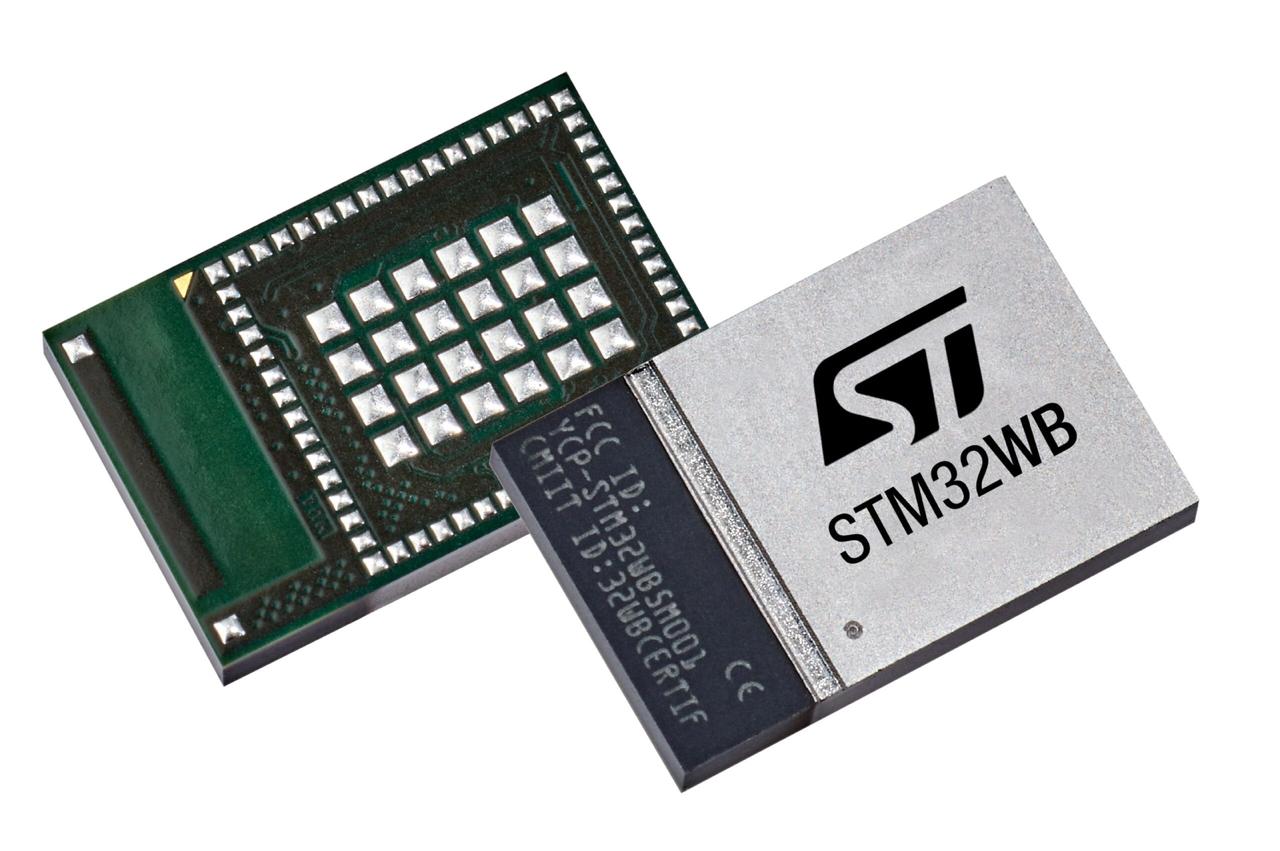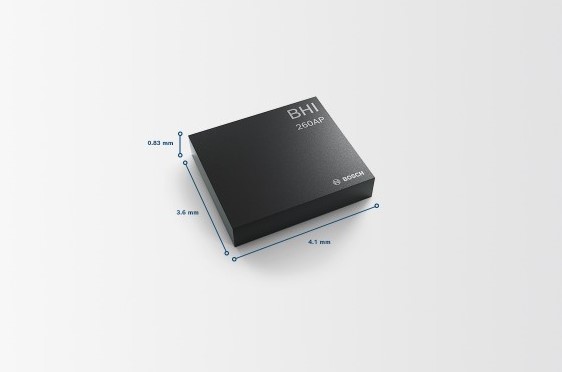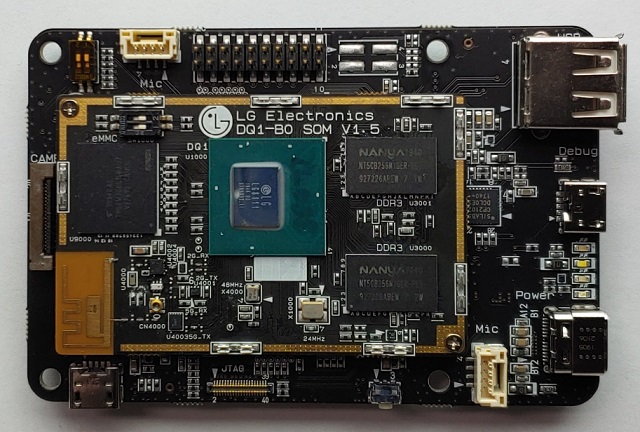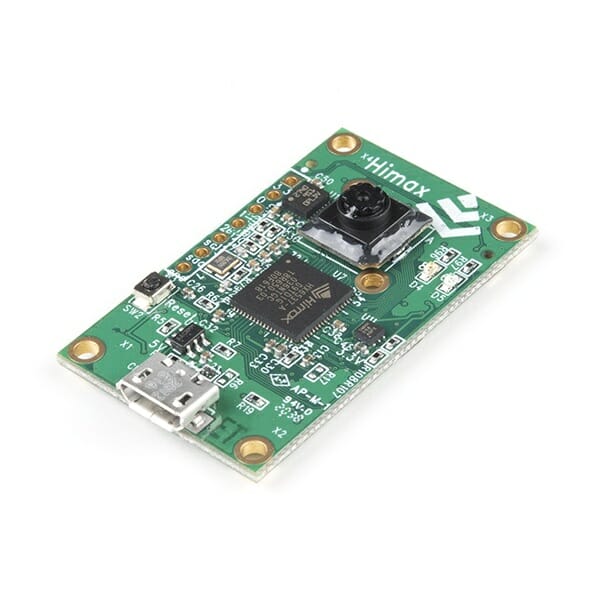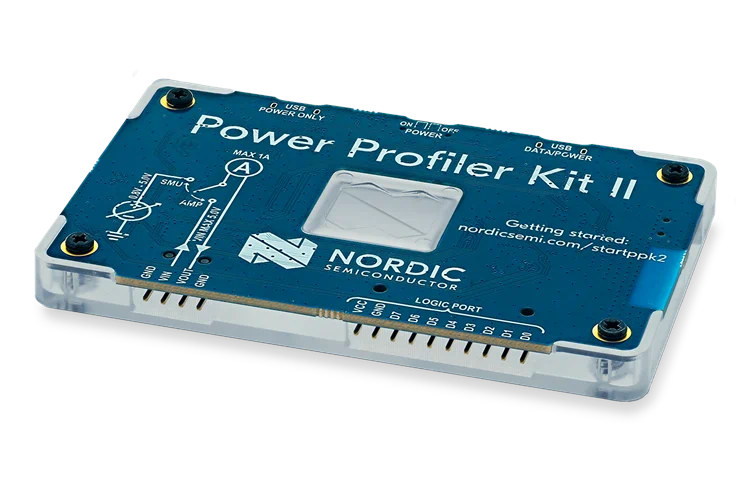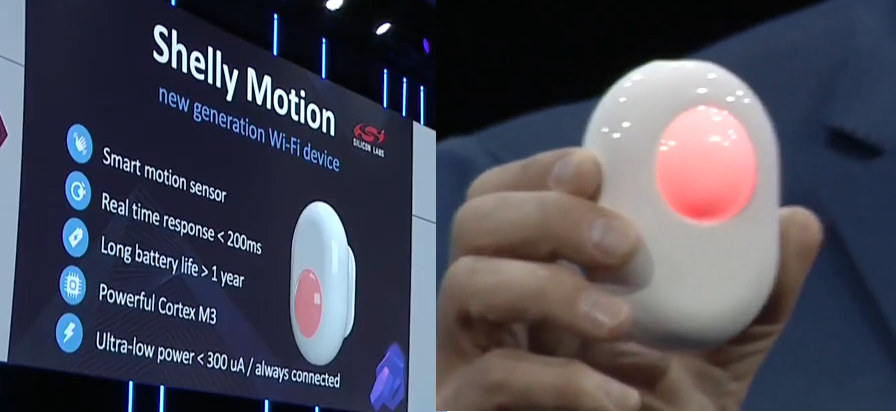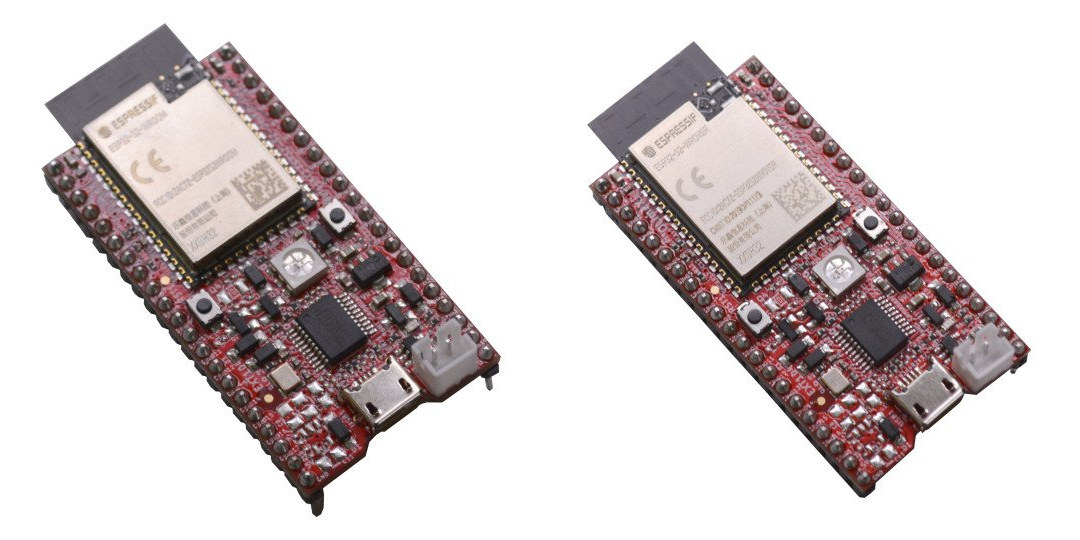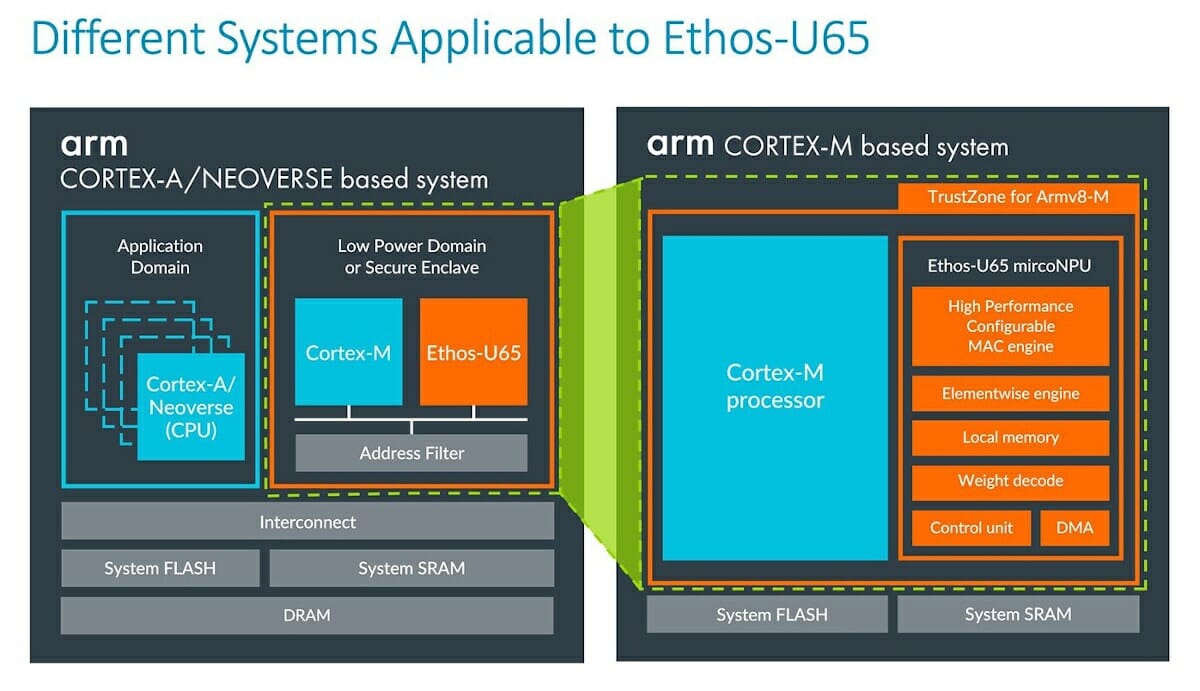The STM32WB5MMG (STM32) is a wireless microcontroller module by STMicroelectronics. It is a compact ultra-low-power module that allows customers to design 2-layer PCBs and integrates everything up to the antenna, including an IPD (integrated passive device) for reliable antenna matching in order to reduce the overall costs. The STM32 wireless module is compatible with BLE (Bluetooth Low Energy) 5.0, OpenThread, Zigbee 3.0, dynamic and static concurrent modes, and 802.15.4 proprietary protocols. It also supports simultaneous dual-protocol mode that allows IEEE 802.15.4 radio-based protocols like Zigbee 3.0 and OpenThread for direct connection with any BLE device. Overview of STM32 Wireless Module The STM32 wireless module is a SiP-LGA86 package (System in Package Land Grid Array) with various external components including: STMicro STM32WB55 Cortex-M4/M0+ wireless MCU LSE crystal HSE crystal Passive components for SMPS Antenna matching and antenna IPD for RF matching and harmonics rejection Key Features of STM32 Wireless Module Dedicated […]
BHI260AP is an AI smart sensor with built-in IMU by Bosch Sensortec
BHI260AP AI smart sensor integrates a 6-axis IMU, a 32-bit customizable programmable microcontroller, and various software functionalities. The AI smart sensor has embedded AI with on-sensor applications such as fitness tracking, navigation, machine learning analytics, and orientation estimation. The dimensions of the miniaturized AI smart sensor are 4.1mm x 3.6mm x 0.83 mm. Hardware Features of BHI260AP AI Smart Sensor ARC EM4 CPU includes ARCv2 16/32 bit instruction set working up to a frequency of 3.6 MHz. The core also integrates Floating Point Unit (FPU) and Memory Protection Unit (MPU) with 4 channel micro DMA controller. CPU has two modes of AI functioning at 25Hz and 50Hz with 249µA and 386µA of current consumption respectively. Integrated sensor (6-DoF IMU) includes 16-bit 3 axis accelerometer and 16-bit 3 axis gyroscope. The sensor works at an operating voltage of 1.8 V with a standby current value of 8µA, hence the power consumption […]
LG launches LG8111 AI SoC and development board for Edge AI processing
LG Electronics has designed LG8111 AI SoC for on-device AI inference and introduced the Eris Reference Board based on the processor. The chip supports hardware processing in artificial intelligence functions such as video, voice, and control intelligence. LG8111 AI development board is capable of implementing neural networks for deep learning specific algorithms due to its integrated “LG-Specific AI Processor.” Also, the low power and the low latency feature of the chip enhances its self-learning capacity. This enables the products with LG8111 AI chip to implement “On-Device AI.” Components and Features of the LG8111 AI SoC LG Neural engine, the AI accelerator has an extensive architecture for “On-Device” Inference/Leaning with its support on TensorFlow, TensorFlow Lite, and Caffe. The CPU of the board comes with four Arm Cortex A53 cores clocked at 1.0 GHz, with an L1 cache size of 32KB and an L2 cache size of 1MB. The CPU also […]
Himax WE-I Plus EVB AI development board supports TFLite for microcontrollers
Himax WE-I Plus EVB is a low-power AI development board focused on machine learning and deep learning applications with its support for the TensorFlow Lite framework for Microcontrollers. It consists of majorly two significant components. First, HX6537-A ASIC is an ultra-low-power microcontroller designed for battery-powered TinyML applications. Second, HM0360 VGA mono camera with ultra-low power and CMOS image sensing features for CV(Computer Vision) based applications like object classification and recognition. The All in One AI Development Board The Development Board consists of HX6537-A ASIC, with built-in ARC EM9D DSP working at 400MHz frequency. It contains internal 2MB ultra-low leakage SRAMs for system and program usage. It also contains two LEDs to display classification results. Connections with external sensors/devices can be established using I2C and GPIOs interface present in its expansion header. “The all-in-one WE-I Plus EVB includes an AI processor, HM0360 AoS VGA camera, 2 microphones, and a 3-axis accelerometer […]
Power Profiler Kit II measures power consumption in Nordic Semi based embedded systems
If you’re developing battery-powered products it’s important to optimize your application to consume as little power as possible to extend battery life. As we’ve seen with Qoitech Otii Developer Tool, getting the right tool for development can help developers work more efficiently, and save countless man hours. If you’re specifically working on products based on Nordic Semi nRF51, nRF52, nRF53 or nRF91 wireless chips, the company has just announced the Power Profiler Kit II (PPK2) that enables easy and affordable power measurement of average and dynamic power consumption in embedded solutions based on the aforementioned wireless SoC’s/SiP’s. Power Profiler Kit II key features: 200nA to 1A measurement range Resolution varies between 100nA and 1mA depending on the measurement range Instantaneous and average current measurement for all Nordic DKs, in addition to custom HW Ampere meter and source modes Built-in programmable regulator with a 0.8V to 5V output range and up […]
Shelly Motion sensor to feature Silicon Labs WiFi chip with Bluetooth-like power consumption
[Update: The information from Shelly about a new “Cortana M3” processor is incorrect, we’ve been contacted by Silicon Labs, and there’s no Cortana M3 microcontroller from the company, Shelly is just using one of the company’s Cortex-M3 based WiFi solutions (SoC or module). The article remains unchanged] WiFi is one of the most convenient ways to connect IoT devices as it’s omnipresent, low-cost, and the range is ideal for the typical smart home. That’s all good until you start to power the device with a tiny battery, as WiFi consumes much more power than Zigbee, Z-Wave, or Bluetooth. Over five years ago, Rockchip RKi6000 WiFi SoC promised Bluetooth 4.0 LE power consumption numbers allowing coin-cell powered WiFi devices, and there were some demos the following year, but I’ve yet to see a consumer device based on the solution. This brings me to the main topic of this post: Shelly Motion, […]
ESP32-S2 board targets battery-powered applications with 30uA deep sleep power consumption
A few months ago, Olimex unveiled renders of ESP32-S2-Devkit-LiPo WiFi board that was supposed to consume as little as 2uA in sleep mode, follows ESP32-S2-Saola-1 board form factor and pinout, and adds an ultra-efficient circuitry to support LiPo batteries. The good news is that Olimex has now launched two versions of their ESP32-S2 board optimized for battery-powered applications with ESP32-S2-DevKit-Lipo and ESP32-S2-WROVER-DevKit-Lipo (with 2MB PSRAM) going for 5.56 Euros and 6.36 Euros respectively. ESP32-S2-DevKit-LiPo specifications: Wireless module: ESP32-S2-DevKit-LiPo – ESP32-S2-WROOM with Espressif ESP32-S2 single-core 32-bit LX7 microprocessor up to 240 MHz with 128 KB ROM, 320 KB SRAM, 16 KB SRAM in RTC, 4MB SPI flash ESP32-S2-WROVER-Devkit-LiPo – ESP32-S2-WROVER – same as above plus 2MB PSRAM Wireless connectivity – 2.4 GHz 802.11 b/g/n WiFI 4 up to 150 Mbps Expansion – 2x 20-pin I/O headers with SPI, I2S, UART, I2C, touch sensors, PWM, etc… (pin-to-pin compatible with ESP32-S2-SAOLA-1) Debugging – […]
Arm Ethos-U65 microNPU enables low-power AI inference on Cortex-A & Neoverse SoC’s
Arm introduced their very first microNPU (Micro Neural Processing Unit) for microcontrollers at the beginning of the year with Arm Ethos-U55 designed for Cortex-M microcontrollers such as Cortex-M55, and delivering 64 to 512 GOPS of AI inference performance or up to a 480x increase in ML performance over Cortex-M CPU inference. The company has now unveiled an update with Arm Ethos-U65 microNPU that maintains the efficiency of Ethos-U55 but enables neural network acceleration in higher performance embedded devices powered by Arm Cortex-A and Arm Neoverse SoCs. Arm Ethos-U65 delivers up to 1 TOPS, and as seen in the diagram enables features that can not be done with Ethos-U55 including object classification and real-time classification. Compared to Ethos-N78 NPU, the new microNPU offers less AI performance, but a significantly higher efficiency although AFAIK no quantified by Arm. The company says the development workflow remains the same with the use of the […]


